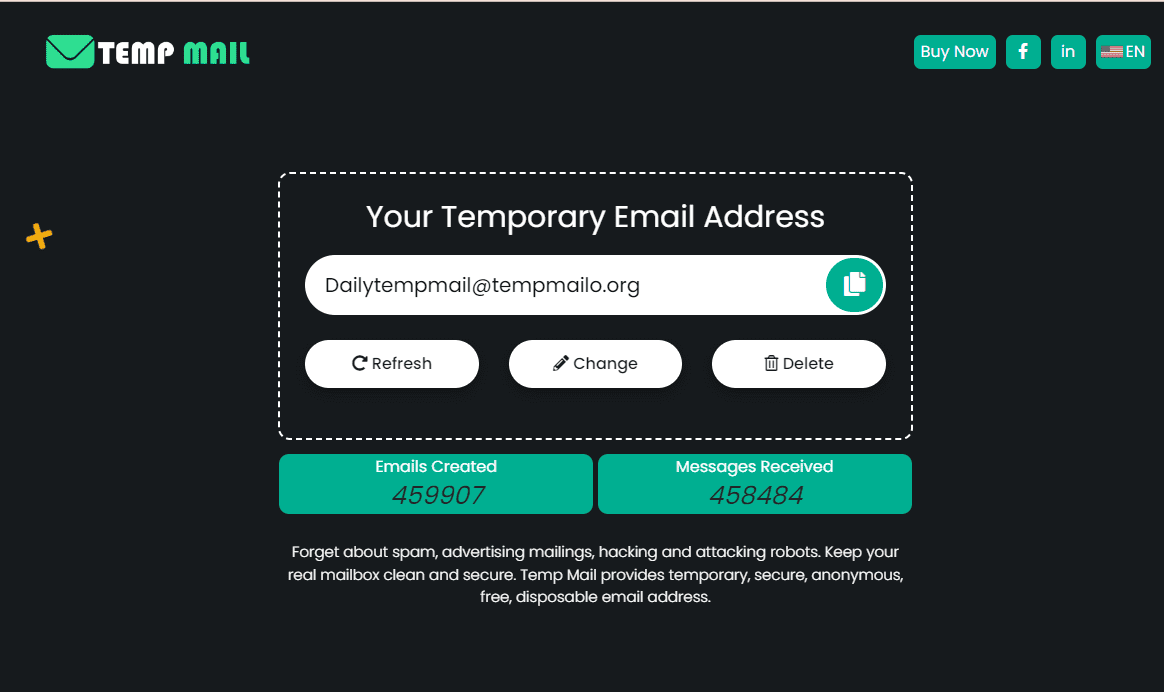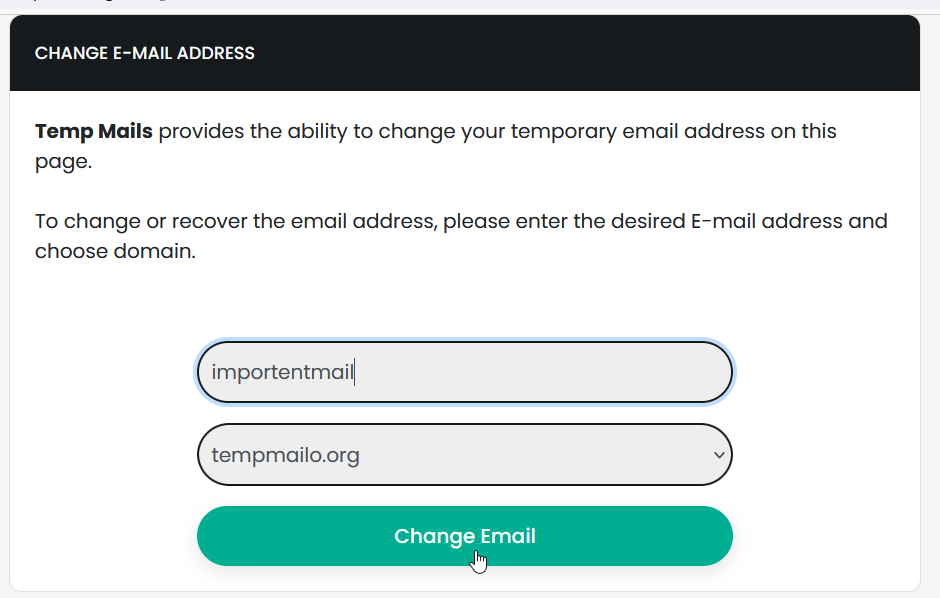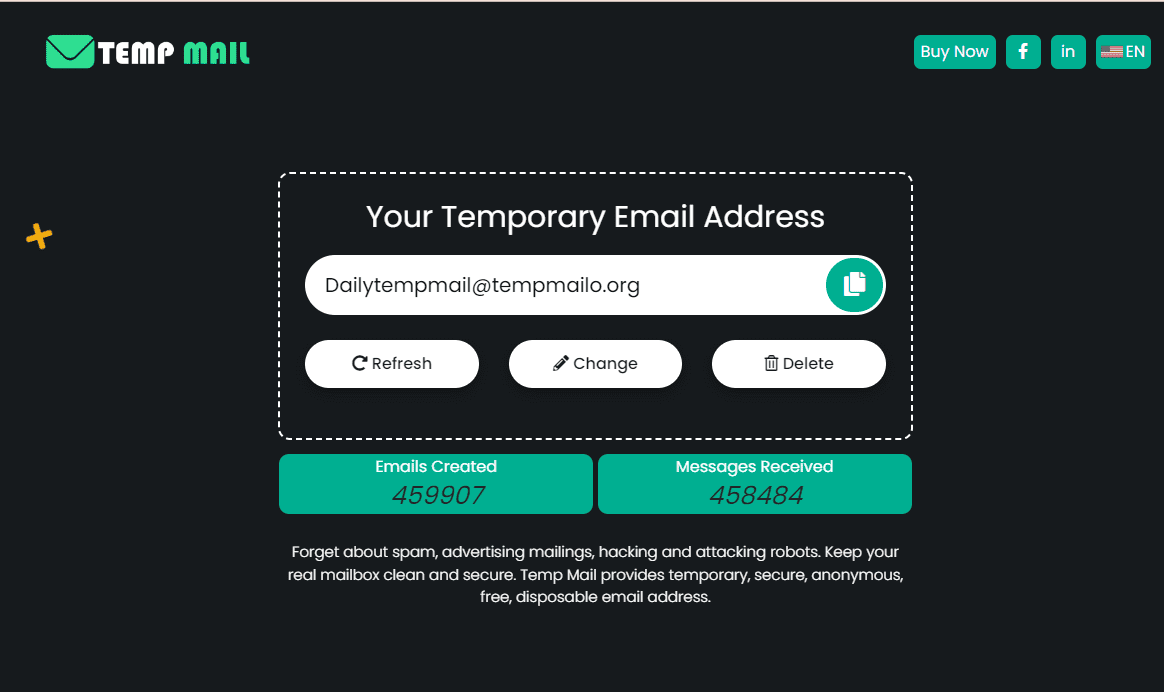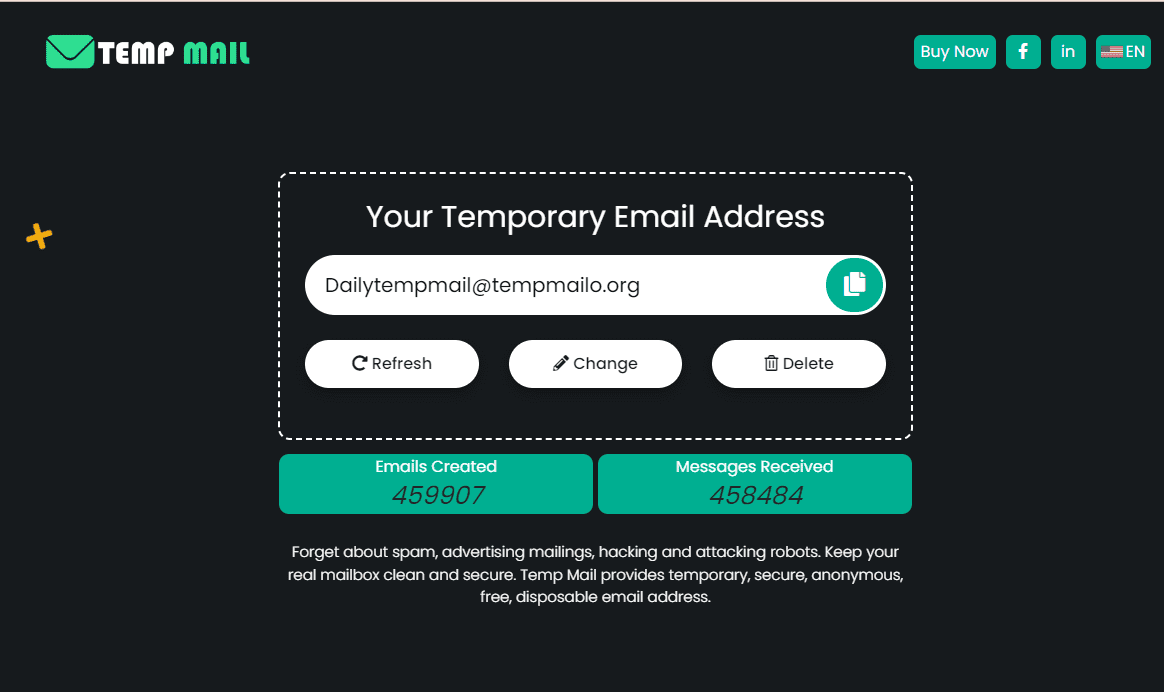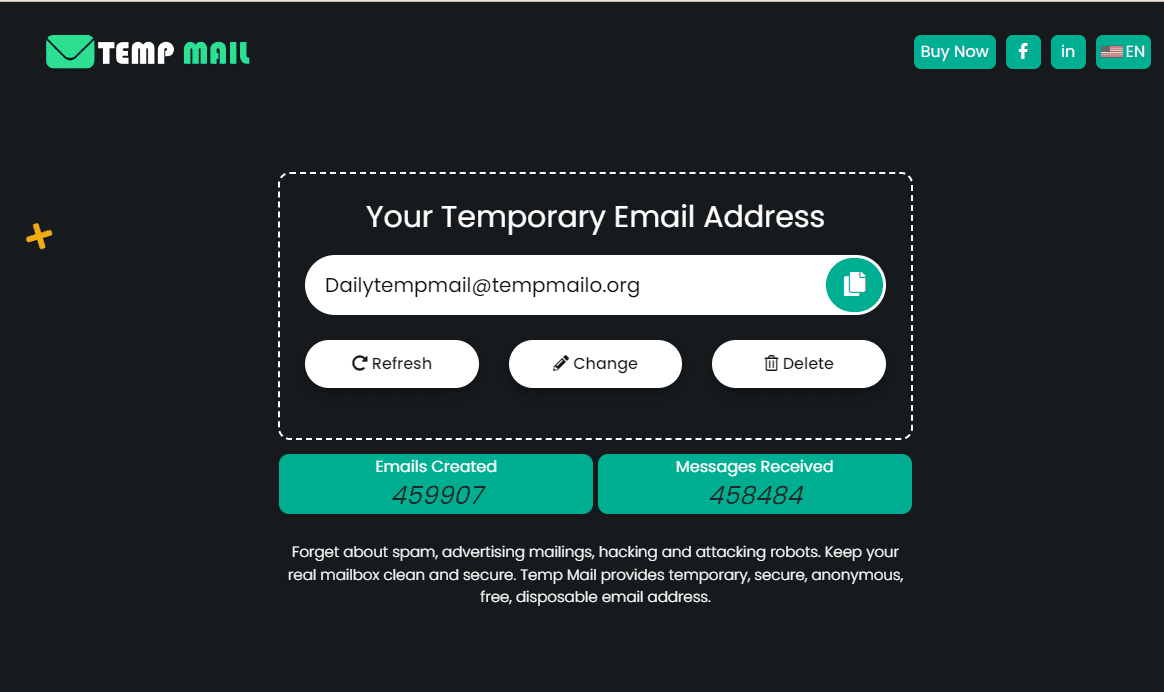A free email ID is a digital address that allows you to send and receive emails without any cost. It is provided by various email services like Gmail, Yahoo Mail, and Outlook. These accounts are accessible via the internet and offer a range of features for personal and professional use.
Having a free email ID is important for several reasons. It provides a convenient way to communicate, manage personal and professional correspondence, and access online services. Additionally, it helps in keeping your communication organized and secure, often with built-in features like spam filters and encryption. Overall, a free email ID is a valuable tool for staying connected in today's digital world.
Types of Free Email Providers
When choosing a free email provider, several popular options stand out for their features and user experience.
1. Gmail:
Operated by Google, Gmail is renowned for its user-friendly interface and seamless integration with other Google services like Google Drive and Google Calendar. It offers 15 GB of free storage, advanced spam filtering, and robust security features.
2. Yahoo Mail:
Yahoo Mail provides 1 TB of free storage, making it a strong choice for those with high email volume. It includes useful features such as automatic organization of emails into folders and integration with Yahoo's calendar.
3. Outlook:
Microsoft's Outlook offers a clean interface and integrates well with other Microsoft products such as Office 365. It includes features like a focused inbox to prioritize important emails, 15 GB of storage, and robust security options.
4. ProtonMail:
Known for its emphasis on privacy, ProtonMail offers end-to-end encryption for emails. While it provides 500 MB of free storage, its strong focus on security and anonymity makes it an appealing choice for privacy-conscious users.
5. Zoho Mail:
Zoho Mail provides a free plan with 5 GB of storage and integrates well with Zoho's suite of business tools. It is particularly useful for small businesses and professional users who need a reliable email service without ads
How to Choose the Right Free Email Provider
Selecting the right free email provider involves considering several key factors to ensure it meets your needs. Here’s a guide to help you make an informed decision:
1. Storage Capacity:
Check the amount of free storage each provider offers. For users with extensive email traffic or large attachments, a provider with generous storage like Yahoo Mail’s 1 TB might be ideal. If you prefer a balance between storage and features, Gmail’s 15 GB may be sufficient.
2. Security Features:
Look for providers that offer robust security measures, including encryption and spam filtering. Providers like ProtonMail excel in privacy with end-to-end encryption, ensuring your emails remain confidential. If security is a top priority, focus on these advanced options.
3. User Interface and Experience:
Evaluate the user interface and ease of use. A clean, intuitive design can make managing emails more efficient. Providers like Gmail and Outlook are known for their user-friendly interfaces, which can enhance your productivity.
4. Integration with Other Services:
Consider how well the email service integrates with other tools you use. For instance, Gmail integrates seamlessly with Google Workspace, while Outlook connects with Microsoft Office 365. Integration can streamline workflows and improve efficiency.
5. Customer Support:
Check the level of support available. Providers with dedicated customer support can assist you in resolving issues quickly. Yahoo Mail and Outlook offer extensive help resources and support options.
6. Additional Features:
Look for extra features that may be beneficial, such as calendar integration, automatic organization of emails, or advanced search functions.
How to Create a Free Email ID
Creating a free email ID is a straightforward process. Here’s a step-by-step guide to get you started:
1. Choose an Email Provider:
Select a free email provider that fits your needs. Popular options include Gmail, Yahoo Mail, and Outlook. Each offers different features, so consider what’s important to you, such as storage space or security.
2. Visit the Sign-Up Page:
Go to the provider’s website and locate the sign-up page. This is typically found on the homepage or under the “Create Account” button.
3. Fill Out Your Information:
Enter your personal details, such as your name, desired email address, and a password. Make sure your password is strong—use a mix of letters, numbers, and symbols. Some providers may also ask for a phone number for account recovery and verification purposes.
4. Verify Your Account:
You might need to verify your account via a confirmation link sent to your phone or an alternate email address. Follow the instructions provided to complete this step.
5. Set Up Your Account:
Once verified, you’ll be directed to your new email inbox. Customize your settings, such as adding a profile picture or setting up a signature. You can also configure your email preferences and explore additional features.
6. Secure Your Account:
For added security, consider setting up two-factor authentication if your provider offers it. This adds an extra layer of protection by requiring a second form of verification when logging in.
Advantages of Using a Free Email ID
Using a free email ID offers several benefits that make it a popular choice for both personal and professional communication.
1. Cost-Effective Communication:
Free email services eliminate the need for costly email solutions, allowing you to send and receive messages without any financial burden. This is particularly advantageous for individuals and small businesses looking to minimize expenses.
2. Accessibility and Convenience:
Free email providers offer easy access from any device with internet connectivity. This means you can manage your emails on your computer, smartphone, or tablet, ensuring you stay connected regardless of your location.
3. User-Friendly Features:
Many free email services come with intuitive interfaces and features that enhance usability. For instance, Gmail’s organization tools, such as labels and filters, help keep your inbox tidy. Yahoo Mail and Outlook also provide robust email management options.
4. Integration with Other Services:
Free email IDs often integrate seamlessly with other digital tools and services. Gmail integrates with Google Drive and Google Calendar, while Outlook connects with Microsoft Office apps, making it easier to manage your work and personal tasks.
5. Security and Spam Protection:
Leading free email providers offer built-in security features like spam filters, malware protection, and encryption. This helps safeguard your personal information and ensures a safer email experience.
Potential Drawbacks of Using a Free Email ID
While free email IDs offer numerous advantages, there are also some potential drawbacks to consider.
1. Limited Storage: Many free email providers offer limited storage space. For example, Gmail provides 15 GB, which is shared across Google services, while others may offer even less. If you frequently receive large attachments or manage a high volume of emails, you might quickly reach your storage limit and need to either upgrade or manage your inbox more actively.
2. Advertisements: Free email accounts often include advertisements within the interface. These ads can be distracting and may impact the overall user experience. Some providers, like Yahoo Mail, display ads prominently, which might be intrusive for some users.
3. Privacy Concerns: Privacy can be a concern with free email services. Providers may scan your emails to serve targeted ads or analyze your data for other purposes. Although most reputable services offer strong security, the lack of privacy might be a downside for users who handle sensitive information.
4. Limited Customer Support: Free email services typically offer limited customer support compared to paid options. If you encounter technical issues or need help, you might not receive prompt or personalized assistance, which can be frustrating.
5. Basic Features: While free email providers offer essential functions, they may lack advanced features available in premium plans. For example, advanced customization options or extensive integration capabilities may be limited.
Best Practices for Managing Free Email IDs
To make the most of your free email ID and ensure it remains secure and organized, follow these best practices:
1. Regularly Update Your Password: Use a strong, unique password for your email account and change it periodically. A robust password should include a mix of letters, numbers, and symbols. Avoid using easily guessed information like birthdays or common words.
2. Enable Two-Factor Authentication: If your email provider offers two-factor authentication (2FA), enable it. This adds an extra layer of security by requiring a second form of verification, such as a code sent to your phone, in addition to your password.
3. Be Wary of Phishing Attempts: Be cautious about unsolicited emails asking for personal information or login credentials. Verify the sender's identity and avoid clicking on suspicious links or attachments. Report phishing attempts to your email provider if you receive them.
4. Organize Your Inbox: Use folders, labels, or filters to categorize and manage your emails. This helps keep your inbox clutter-free and makes it easier to find important messages. Regularly delete or archive old emails to free up storage space.
5. Review Privacy Settings: Regularly check and adjust your privacy settings to control who can see your information and how your data is used. Review the permissions granted to third-party apps and revoke access if necessary.
Conclusion
In summary, free email IDs offer cost-effective communication, easy accessibility, and useful features like integration with other services and strong security options. However, they come with limitations such as storage constraints, potential ads, and privacy concerns. It’s crucial to weigh these benefits and drawbacks carefully. Consider factors like storage capacity, security features, and user interface when choosing a provider. By selecting the email service that aligns best with your personal or professional needs, you can enjoy a smooth, efficient, and secure email experience.
Frequently Asked Questions
1. What are free email IDs?
Free email IDs are email accounts provided at no cost by various online services. They allow users to send and receive emails without any financial commitment. Examples include Gmail, Yahoo Mail, and Outlook.
2. How do I choose the best free email provider?
When choosing a free email provider, consider factors such as storage capacity, security features, user interface, integration with other services, and customer support. Evaluate each provider based on these criteria to find the one that best meets your needs.
3. Are free email services secure?
Most reputable free email services offer robust security features like spam filtering and encryption. However, privacy concerns can arise, as some providers may scan emails for advertising purposes. To enhance security, enable two-factor authentication and stay cautious of phishing attempts.
4. Can I upgrade my free email account to a paid version?
Yes, many free email providers offer premium versions with additional features and expanded storage. If you find that you need more storage or advanced features, you can often upgrade to a paid plan.
5. How can I organize my free email inbox?
To keep your inbox organized, use folders or labels to categorize emails, set up filters to automatically sort incoming messages, and regularly delete or archive old emails. This helps manage your email flow and makes it easier to locate important messages.
